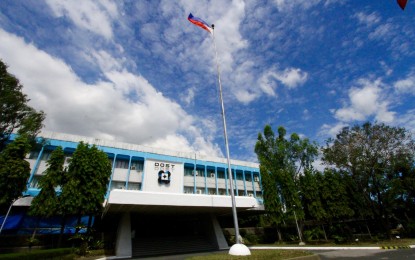
DOST Central Office (Photo courtesy of DOST)
MANILA – The Department of Science and Technology (DOST) on Monday introduced three Niche Centers in the Regions (NICERs) supporting the United Nation’s (UN) Sustainable Cities and Communities targets.
"In support of the UN's 17 Sustainable Development Goals (SDGs), the DOST, through these NICERs, is providing possible R&D (research and development) interventions that will enhance inclusive and sustainable urbanization, reduce the adverse environmental impact of cities, decrease economic losses caused by natural disasters, and develop holistic policies and community plans," DOST Undersecretary Rowena Cristina Guevara said in a virtual symposium.
In the National Capital Region (NCR), Guevara said the Center for Astronomy R&D of Rizal Technological University (RTU) has trained over 500 young scientists in the field of astronomy and space science in senior high schools and colleges and developed the Pollution Luminance or Pollux device to monitor light pollution.
From these R&D efforts, the center, in collaboration with the Philippine National Police, will propose a local policy for local government units to lessen light pollution and energy consumption in the cities and to improve lighting in areas considered as crime hotspots, she said.
For the mountainous communities, the Mountain Engineering R&D Center of the University of the Cordilleras (UC) in Baguio City was also presented.
The center provides science and engineering interventions to mitigate the risks of landslides and extreme flooding events.
Such efforts, Guevara said, are envisioned to save an estimated PHP200 million per annum in infrastructure damage due to mountain landslides, increase agricultural production of rice terraces by 20 percent, and provide 2 million Cordillerans access to sustainable clean water through collaborative water resource management and governance.
Another NICER is the Environmental Informatics R&D Center of the University of the Philippines Cebu in Central Visayas, which would be of assistance to the country’s forested and farming communities.
Guevara said the center has initiated the crafting of the biodiversity atlas of Cebu and monitored mango pests and diseases through microcontroller-based sensor systems.
It has also produced species distribution maps for 103 native species of flora and fauna, published biodiversity threat maps to monitor human settlement pressures on biodiversity richness, generated surface water maps and groundwater potential maps for 46 municipalities in Cebu, all for the improvement of the Central Cebu Protected Landscape’s rehabilitation and reforestation initiatives.
"We hope that these inspiring efforts of our NICERs to deliver scientific development to their regional communities will encourage the private sector to likewise conduct R&D aligned to the region’s economic priorities," Guevara said.
She said the DOST hopes that these initiatives would motivate the higher education institutions to do more R&D projects that seek to improve the lives of the Filipinos.
"The DOST intends that these will upgrade the technological capabilities of industrial sectors, support domestic technology commercialization, and promote a conducive environment for industrial diversification and competitiveness in the regions," she added. (PNA)
